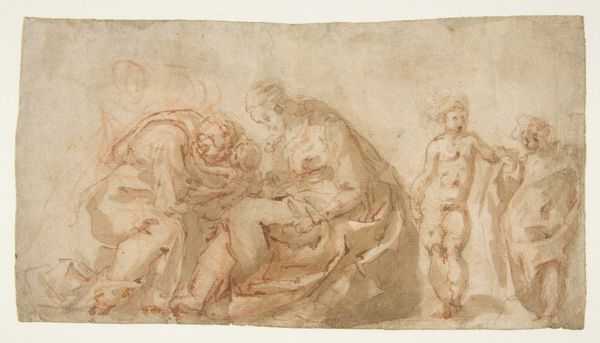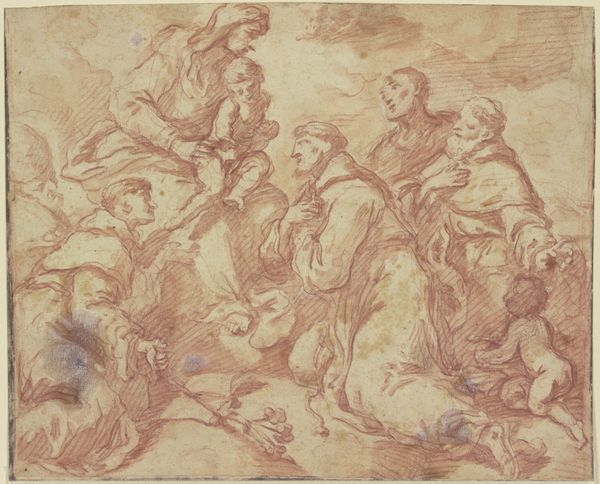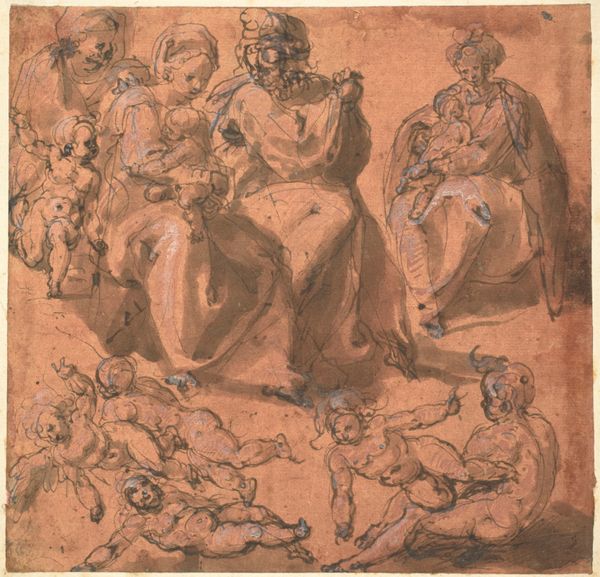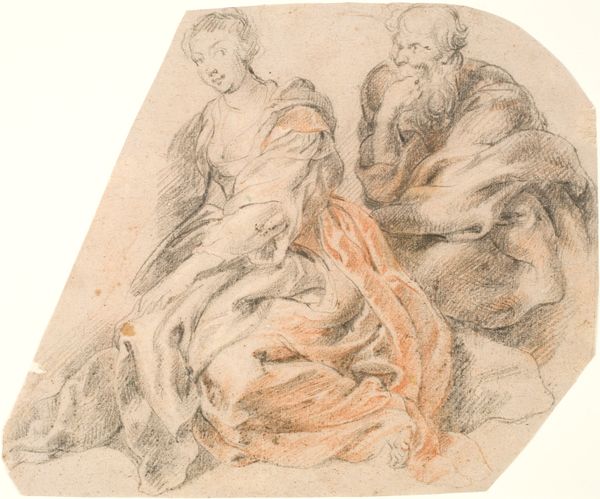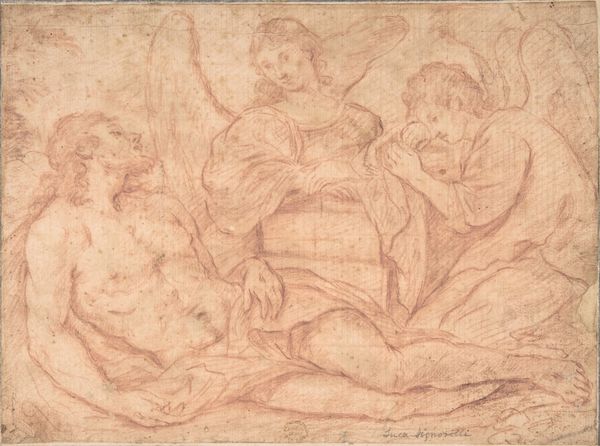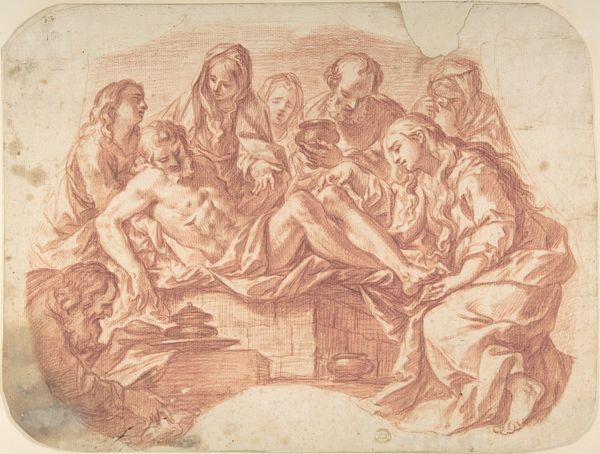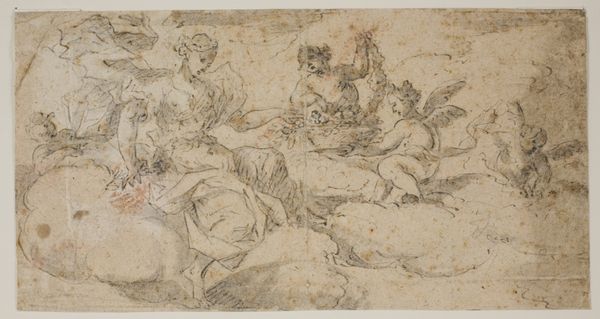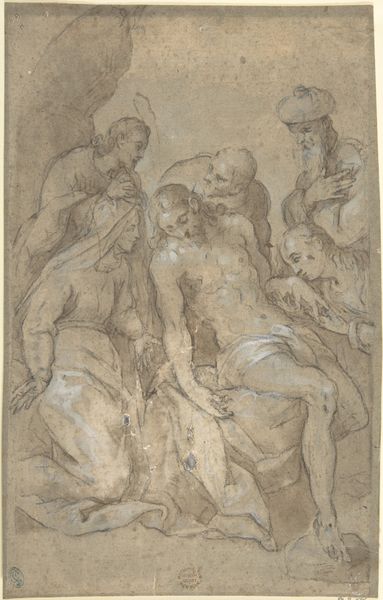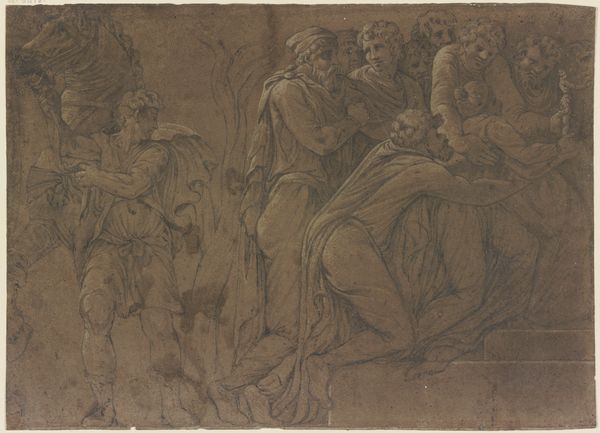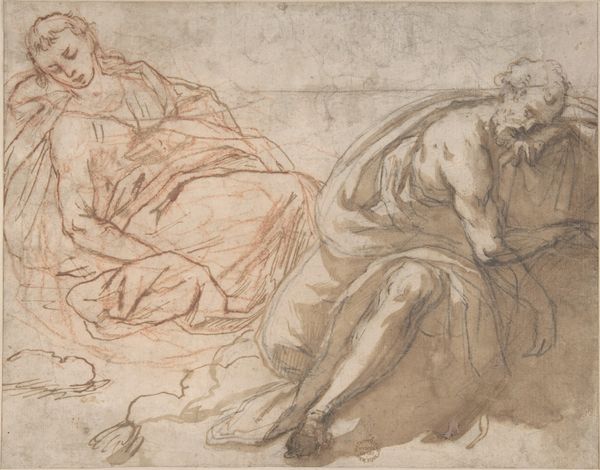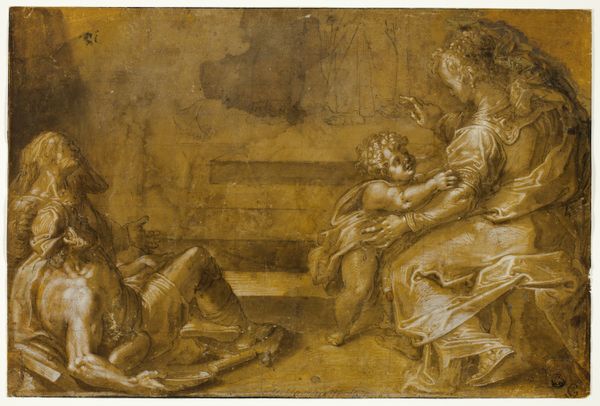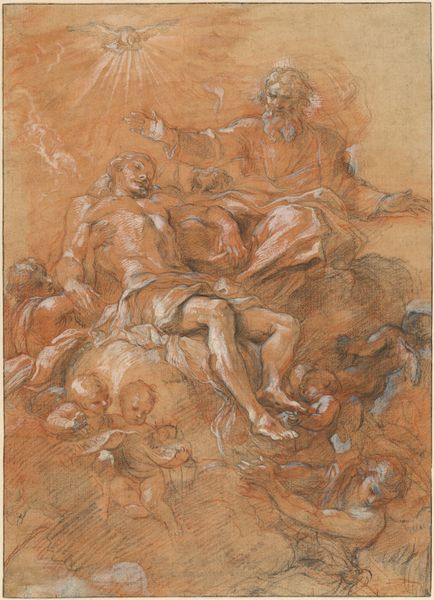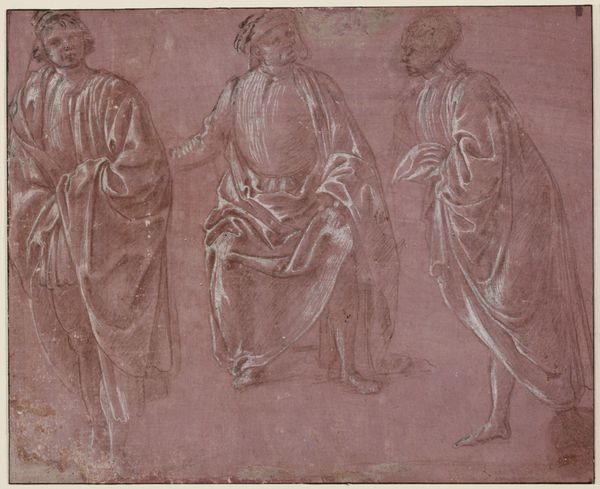
The Holy Family with Saint Elizabeth and the Infant Baptist 1560 - 1630
0:00
0:00
drawing, pencil
#
drawing
#
pencil sketch
#
charcoal drawing
#
figuration
#
pencil drawing
#
pencil
#
history-painting
#
italian-renaissance
Dimensions: 5 9/16 x 8 1/16in. (14.1 x 20.5cm)
Copyright: Public Domain
Curator: Up next, we have a drawing attributed to Cesare Pollino, also known as Cesare dal Francia, titled "The Holy Family with Saint Elizabeth and the Infant Baptist." It's estimated to have been created sometime between 1560 and 1630 and now resides here at the Met. Editor: Immediately, I'm struck by the medium—it's a reddish-brown pencil sketch, quite faded. It evokes a sense of fragility and age. The figures are all interwoven, and there's this pervasive gentleness in how they're rendered. Curator: Yes, the red chalk gives it a warmth that softens the religious scene. Considering Pollino's training was deeply rooted in the artistic production methods specific to the Italian Renaissance, it’s worth noting the function of drawing during this period. A study like this would have been crucial for preparing larger paintings. Editor: Absolutely. I am seeing how the composition of bodies and faces are gendered in subtle ways, but what interests me more is what these artistic choices may say about historical expectations related to family and maternity. The tender expressions highlight both shared humanity, but also expectations around maternal relationships. Curator: Precisely. Think about the availability, or perhaps the unavailability of materials, consider how Pollino’s access to red chalk influenced the scale and function of this work, dictating whether it was for private contemplation, academic training, or preparatory exploration. It all boils down to resources and what they allowed. Editor: Yes. The reality is access during that period would have been far from even. Whose voices and bodies were uplifted and funded at that time? Looking at historical examples forces a discussion about contemporary ethics, who benefits from cultural resources, and where is more access needed. Curator: Right. And the act of creating drawings using pencils itself tells us much about the intersection of art, skill, and production during the Renaissance, underscoring the essential role such sketches played within workshops. This wasn’t simply artistic expression; this was also labor. Editor: In viewing works like this through today’s lens, the questions of faith, family, identity, labor, and maternity continue to spur contemplation—the conversation extends far beyond this gallery. Curator: I concur. The convergence of skill, access, and application ultimately shapes our interpretations of Renaissance workshops and what its surviving visual materials might illuminate today.
Comments
No comments
Be the first to comment and join the conversation on the ultimate creative platform.
